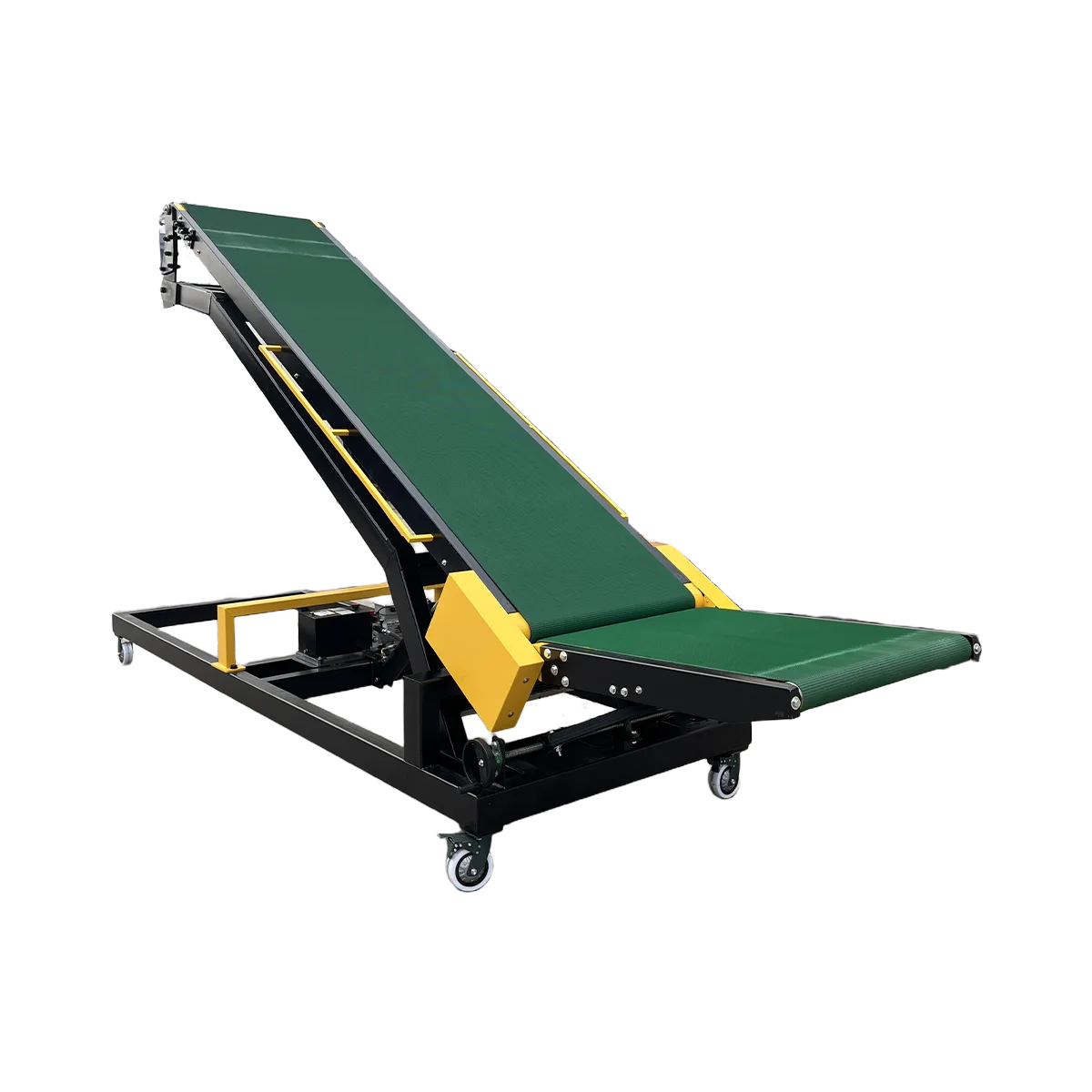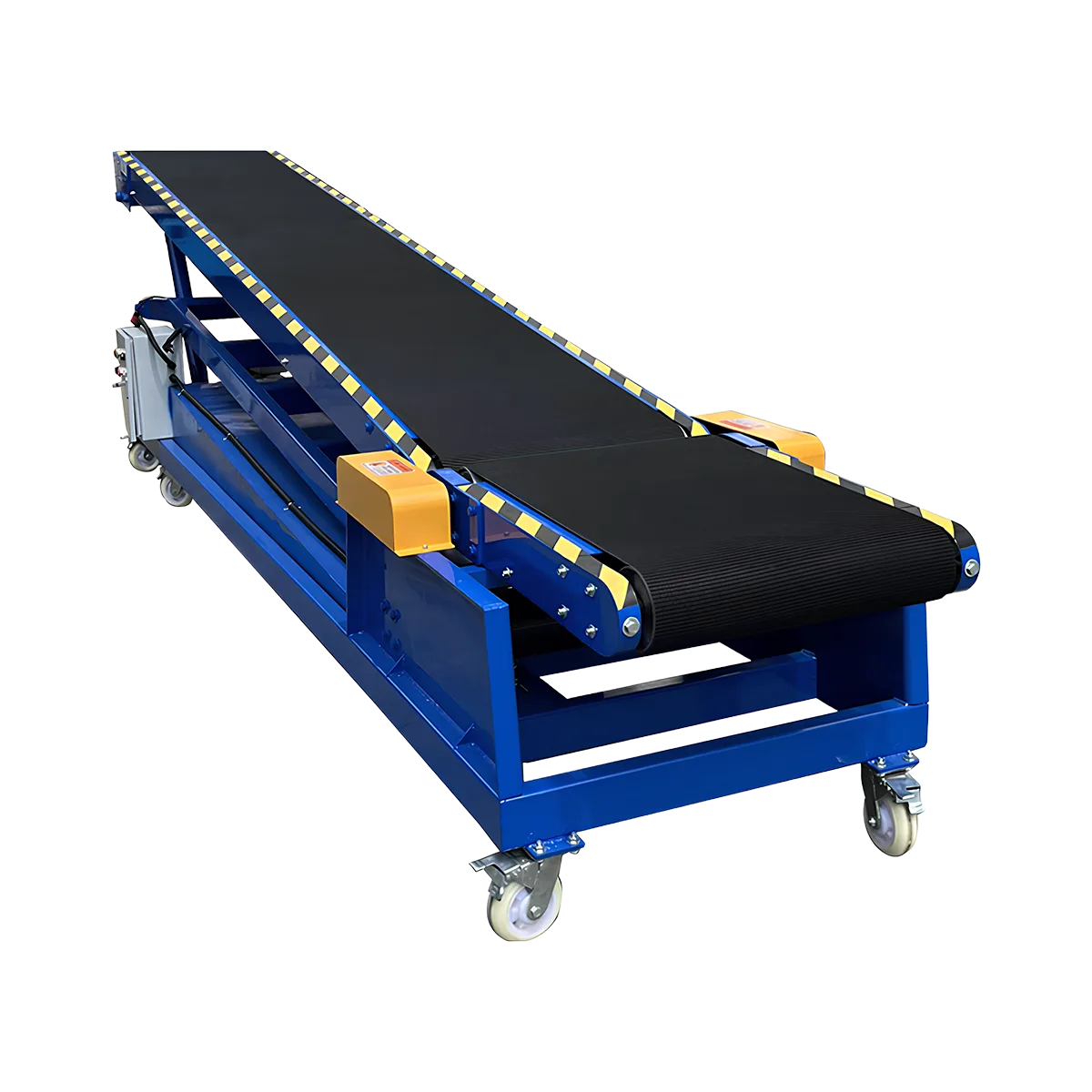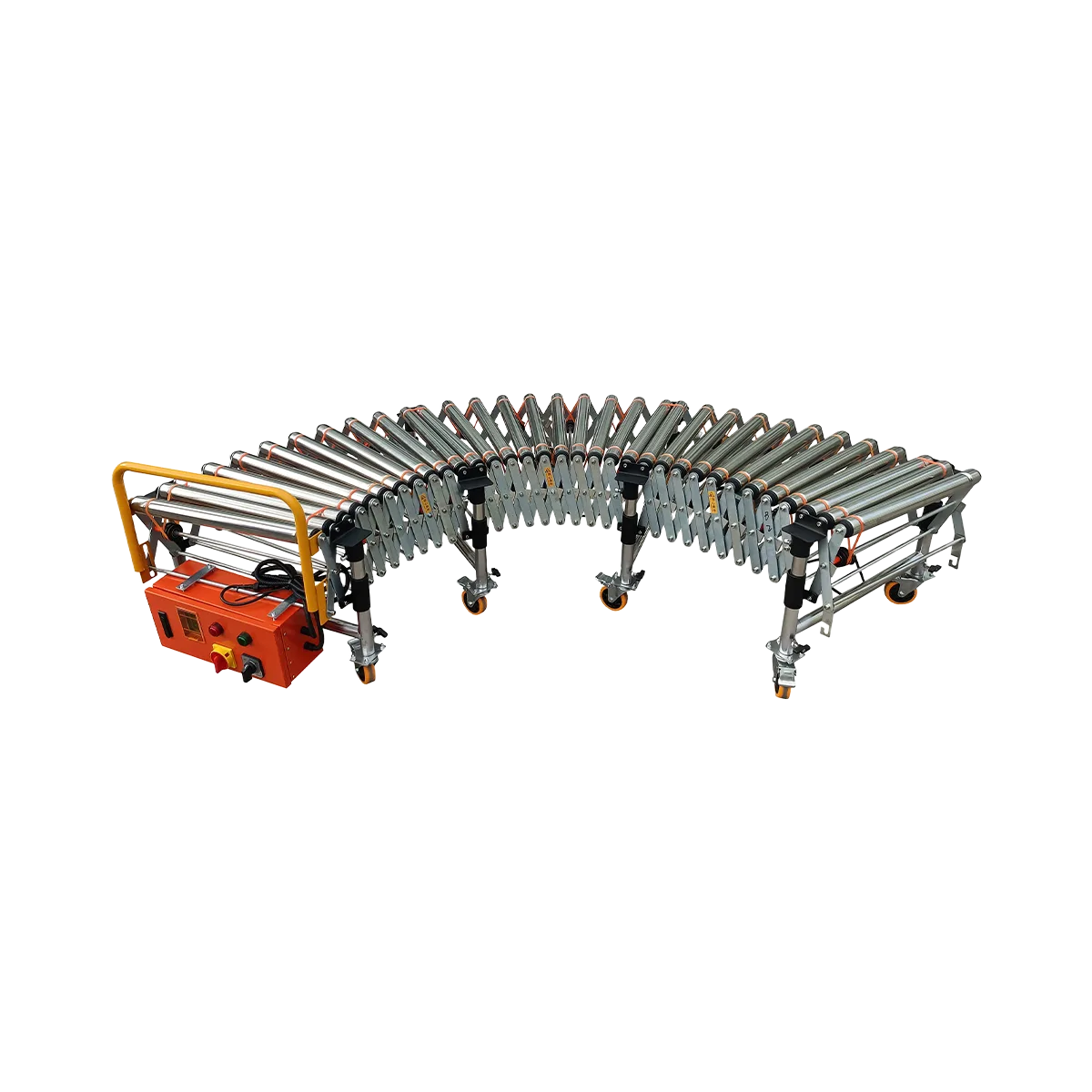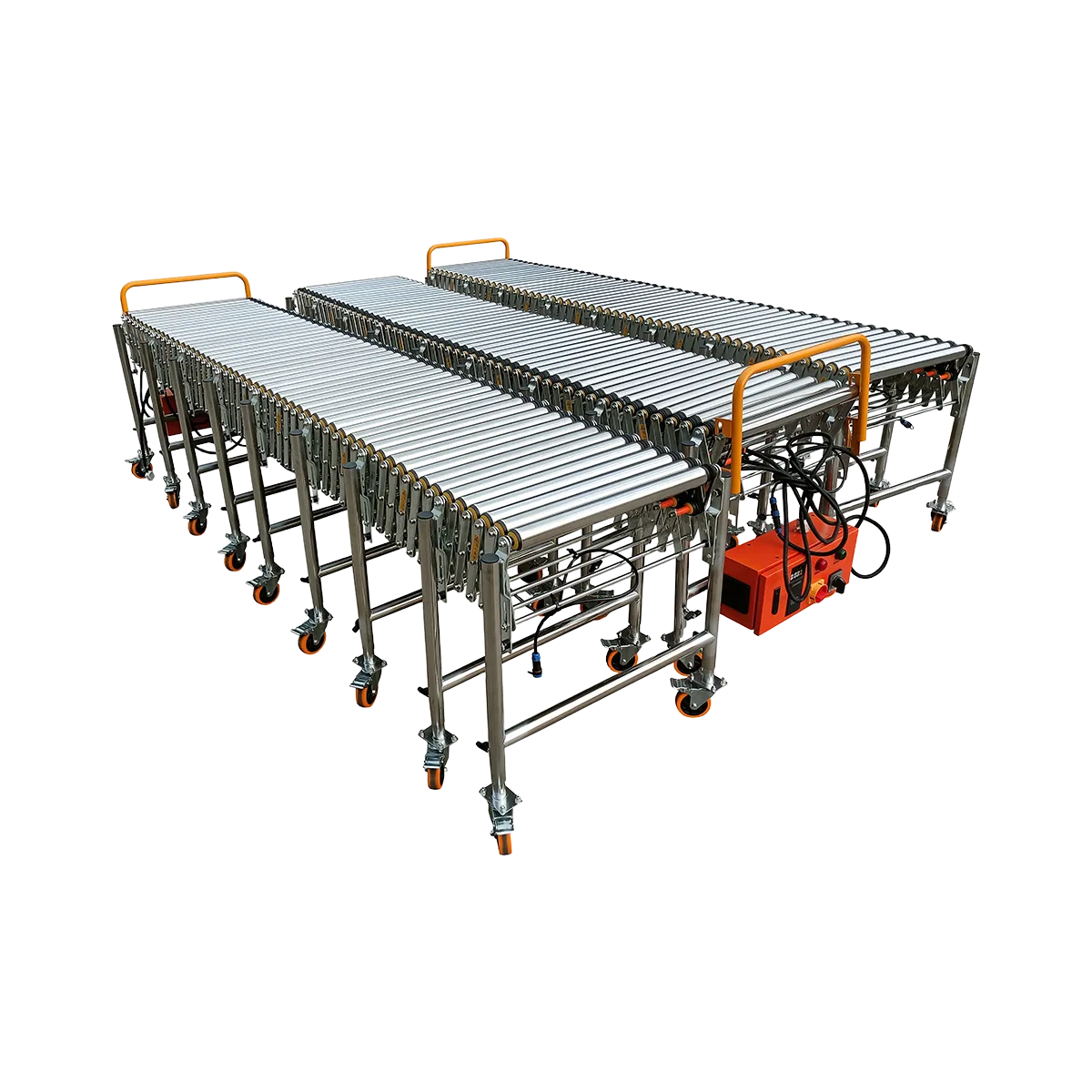Peak Season Survival Guide: Scaling Up Your Loading Dock Capacity
Master seasonal warehouse solutions with our peak season logistics guide. Learn how to expand loading capacity, manage high volumes, and implement flexible systems when you need them most.
Related Products
-
Hydraulic Conveyor – Large – 7900 mm LengthCollapsed LengthExtended LengthLoad Capacity
80 kg/m
Applicable GoodsFlat-bottomed Goods
Bagged Goods
-
Hydraulic Conveyor – Medium – 7000 mm LengthCollapsed LengthExtended LengthLoad Capacity
80 kg/m
Applicable GoodsFlat-bottomed Goods
Bagged Goods
-
Powered Roller Conveyor – O-shaped Belt Driven – 1500 mm/SectionCollapsed Length
525 mm
Extended Length1500 mm
Load Capacity80 kg/m
Applicable GoodsFlat-bottomed Goods
-
Powered Roller Conveyor – Multi-wedge Belt Driven – 2000 mm/SectionCollapsed Length
700 mm
Extended Length2000 mm
Load Capacity100 kg/m
Applicable GoodsFlat-bottomed Goods
-
Powered Roller Conveyor – Multi-wedge Belt Driven – 3000 mm/SectionCollapsed Length
1050 mm
Extended Length3000 mm
Load Capacity80 kg/m
Applicable GoodsFlat-bottomed Goods
Peak season logistics can make or break your warehouse operation. Whether it’s holiday rushes, seasonal inventory surges, or unexpected business growth, your regular loading dock setup can quickly become the bottleneck that slows everything down. When package volumes triple and delivery trucks line up outside, the pressure to maintain efficiency becomes immense. This guide explores practical seasonal warehouse solutions that help you expand capacity quickly without permanent infrastructure investments.
The difference between thriving and merely surviving during high-volume periods often comes down to how effectively you can scale your loading and unloading operations. With the right flexible loading systems and temporary expansion strategies, you can transform seasonal challenges into opportunities for growth and customer satisfaction.
The Challenge: When Standard Capacity Meets Extraordinary Demand
Understanding the Peak Season Bottleneck
When your operation suddenly needs to handle three times the normal volume, several critical challenges emerge:
- Limited dock doors: Each physical dock door can only service one truck at a time
- Space constraints: Fixed infrastructure limits your ability to expand
- Labor inefficiency: Workers idle while waiting for space to load or unload
- Scheduling pressure: Trucks face longer wait times, creating delivery delays
- Equipment limitations: Standard fixed conveyor systems lack flexibility
The traditional solution—building more permanent dock doors—is expensive, time-consuming, and often impractical for seasonal needs. Construction projects typically take months and require significant capital investment that sits unused during normal operations.
The Real Cost of Peak Season Bottlenecks
| Impact Area | Consequences of Inadequate Capacity |
|---|---|
| Operational | Increased overtime costs, lower throughput rates |
| Financial | Late delivery penalties, lost business opportunities |
| Customer | Reduced satisfaction, damaged reputation |
| Employee | Higher stress, potential safety issues, burnout |
| Carrier | Extended wait times, missed delivery schedules |
The Flexible Solution: Creating Temporary Loading Stations with Naili Equipment
The key to peak season survival lies in creating flexible, temporary loading and unloading zones that can be deployed when needed and stored when not in use. This approach allows you to effectively multiply your dock capacity without permanent construction.
Using Hydraulic Conveyors to Create Instant ‘Dock Doors’ Anywhere
Hydraulic conveyor systems offer a revolutionary solution for creating temporary loading points anywhere along your warehouse perimeter. These versatile systems:
- Bridge the height gap between ground level and truck beds (700mm to 1400mm)
- Create loading/unloading points wherever trucks can access your building
- Require no permanent installation or facility modifications
- Can be deployed and operational within minutes
- Support loading and unloading through standard truck doors or even side doors
The Hydraulic Conveyor’s adjustable height capability means you can service various truck heights, from small delivery vans to full-size trailers. When paired with extendable roller conveyor sections at the top, these systems can reach deep into trucks for efficient loading and unloading.
For example, the Medium Hydraulic Conveyor with its 7000mm length and ability to reach heights of up to 2400mm provides an ideal solution for standard shipping containers and trailers. Its upper support frame can accommodate up to 10 meters of roller conveyor extensions, allowing workers to reach the entire depth of the vehicle.
Deploying Multiple Flexible Conveyor Lines for Simultaneous Loading/Unloading
Once you’ve established temporary loading points using hydraulic conveyors, you can dramatically increase efficiency by creating multiple parallel processing lines using flexible gravity roller conveyor or powered options.
Strategy 1: Multiple Truck Processing
- Set up 2-3 hydraulic conveyors at different points around your warehouse
- Create separate teams assigned to each station
- Process multiple trucks simultaneously instead of sequentially
- Reduce truck waiting time by 50-70%
Strategy 2: Specialized Processing Lanes
- Dedicate specific loading stations to particular product types or destinations
- Use powered roller conveyor for heavier items requiring less manual effort
- Implement gravity conveyors for lighter packages and areas with space for slight inclines
- Optimize each line for specific package characteristics
The flexibility of systems like the Gravity Skate Wheel Conveyor, with its 1:5 extension ratio and lightweight design, makes it perfect for quick deployment and reconfiguration. When stored, a 2100mm extended section collapses to just 420mm, allowing you to keep substantial capacity ready for peak periods without sacrificing valuable warehouse space.
Staff Training for Peak Efficiency
Even the best equipment requires proper operation to deliver maximum benefits. Developing specialized peak season training protocols can significantly enhance your temporary expansion success.
Quick-Setup Procedures for Temporary Lines
Train dedicated teams on rapid deployment of your flexible loading systems:
- Setup sequence training: Establish clear steps for deploying each component
- Role assignment: Designate specific responsibilities to team members
- Time targets: Set benchmarks for complete system setup (typically under 30 minutes)
- Troubleshooting protocols: Prepare teams to quickly resolve common issues
- Safety emphasis: Ensure proper lifting techniques and awareness of pinch points
Creating visual setup guides with photos of each step can dramatically reduce deployment time and errors, especially for seasonal staff who may not use the equipment regularly.
Optimal Two-Person Loading/Unloading Techniques
Once your temporary systems are operational, proper staffing and techniques will maximize throughput:
- Position one worker at the truck end loading packages onto the conveyor
- Station another worker at the warehouse end receiving packages
- Establish clear communication signals for speed adjustment and breaks
- Implement package spacing guidelines to prevent jams
- Rotate positions every 30-60 minutes to reduce fatigue
For powered conveyor systems, train operators on speed control to match the unloading pace with downstream processing capacity. For gravity systems, ensure proper incline setup to maintain smooth flow without excessive speed.
With proper training, a two-person team can process:
- Small parcels (up to 5kg): 3500-5000 pieces per hour
- Medium boxes (5-15kg): 2500-3500 pieces per hour
- Large cartons (15-30kg): 2000-2500 pieces per hour
- Heavy bagged goods (40-50kg): 1500-2000 pieces per hour
Post-Peak Storage: Minimizing Footprint When Not in Use
One of the biggest advantages of flexible loading systems is their ability to be compactly stored during normal operations. Implementing efficient storage practices ensures your peak season equipment doesn’t become a space burden during regular periods.
Storage Strategies for Different Conveyor Types
Hydraulic Conveyors:
- While not collapsible, their mobility allows them to be moved to low-traffic areas
- Store against walls with proper clearance for hydraulic components
- Consider weather-protected outdoor storage with appropriate covers if indoor space is limited
Flexible Roller and Skate Wheel Conveyors:
- Fully collapse sections to their minimum length (approximately 1:3 ratio for roller conveyors, 1:5 for skate wheel)
- Stack compatible sections with proper support to prevent frame bending
- Use vertical storage racks specially designed for conveyor sections
- Label each section for quick identification during future deployment
Storage Space Requirements: A complete temporary loading station including one hydraulic conveyor and 10 sections of flexible conveyor can typically be stored in less than 5 square meters of floor space when properly collapsed and organized.
Maintenance During Storage Periods
To ensure your equipment is ready when the next peak arrives:
- Perform post-peak inspection and maintenance before storage
- Apply appropriate lubricants to moving parts before extended storage
- Schedule quarterly operational checks during off-peak periods
- Keep controllers and electrical components in climate-controlled areas
- Document any issues for resolution before the next peak season
Conclusion: Stay Agile and Profitable During Your Busiest Times
Implementing flexible loading systems for peak season logistics challenges allows your operation to remain agile, responsive, and profitable when it matters most. By avoiding the substantial capital investment of permanent dock expansion while still gaining the capacity you need, you can allocate resources more efficiently throughout the year.
The ability to scale loading capacity up and down as needed represents a significant competitive advantage in today’s dynamic business environment. Companies that master temporary dock expansion using hydraulic conveyors and flexible conveyor systems can turn peak season challenges into opportunities for growth while maintaining service levels that keep customers coming back.
Remember that your peak season strategy should evolve with your business. Start with one or two temporary stations, measure the impact, and expand your flexible capacity as needed in future seasons. This incremental approach minimizes risk while providing immediate operational benefits.
For operations handling over 1000 packages daily during peak periods, these flexible loading systems typically achieve return on investment within 6-12 months through labor savings and efficiency improvements.
Frequently Asked Questions
How quickly can a temporary loading station be set up?
With trained staff, a complete temporary loading station using a hydraulic conveyor and flexible roller sections can be deployed in approximately 30 minutes, allowing for rapid response to unexpected volume increases.
Can these systems be used in facilities without loading docks?
Yes, that’s one of their primary advantages. Hydraulic conveyors are specifically designed to create loading points anywhere with ground-level access, eliminating the need for permanent loading docks entirely.
What’s the minimum ceiling height needed for hydraulic conveyor operation?
The hydraulic conveyor requires approximately 2.5 meters of clearance when fully raised. Lower ceiling areas may limit the maximum extension height but can still accommodate smaller delivery vehicles.
How many additional trucks per day can be processed with a temporary station?
Each temporary station can typically process 8-12 additional trucks per shift, depending on load type and volume. Multiple stations can be deployed for greater capacity increases.
Is special electrical service required for these temporary systems?
Powered components require standard electrical service (typically 220V/380V). Hydraulic conveyors require power for their lift mechanism and conveyor motor. Gravity systems require no power, making them ideal for areas without convenient electrical access.
Table of Contents
Recent Posts
Discover effective solutions for conveyor system integration between fixed sorters and loading docks. Bridge the automation gap with flexible, mobile conveyor systems for seamless logistics.
Discover the most efficient frozen goods conveyor system for loading refrigerated trucks while maintaining cold chain integrity at your cold storage warehouse.
Optimize your wholesale club logistics with heavy-duty roller conveyor systems designed for bulk goods handling. Improve efficiency in Costco style warehouses with our solutions.
Optimize tire handling in automotive logistics with specialized conveyor for tires that provides superior grip and controlled movement, minimizing manual handling and increasing efficiency.




